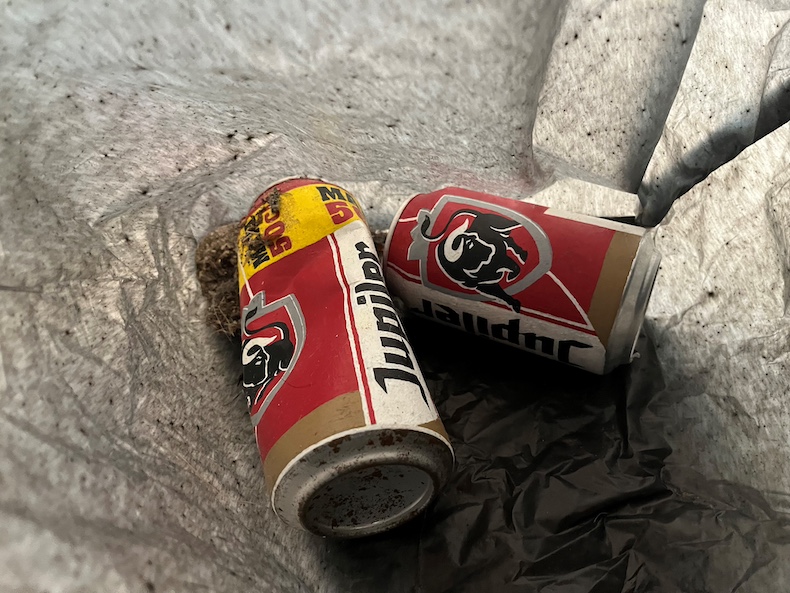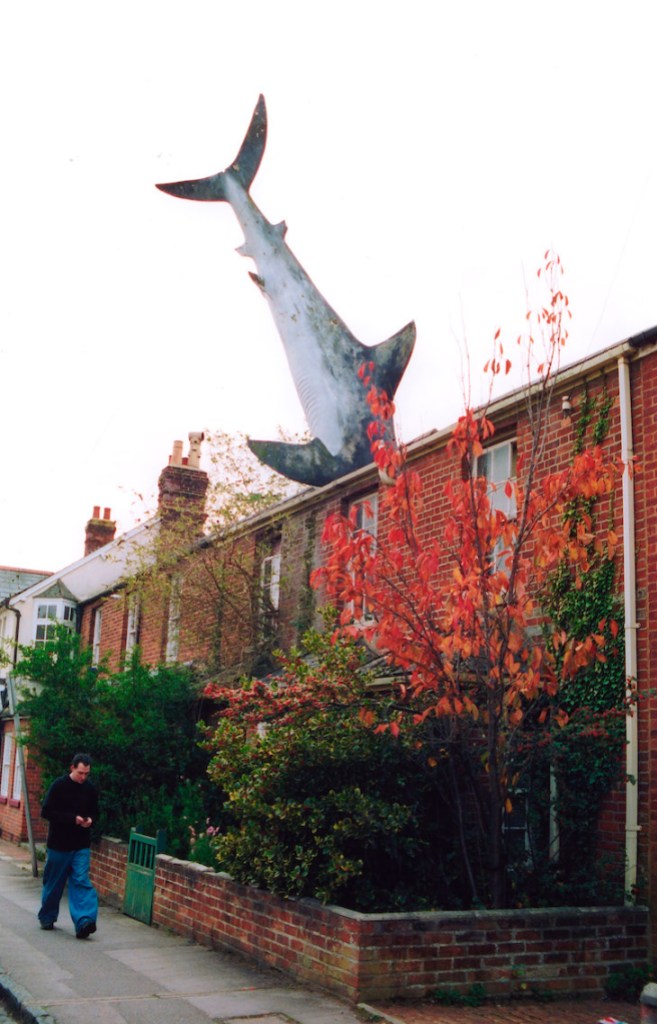Nothing gets your roving correspondent going like a local feud, the pettier the better. So naturally, the eye was drawn to a story that emerged this week involving a Fife resident complaining about the state of his neighbour’s garden – a very literal example of the NIMBYism that has increasingly plagued the towns and cities of Albion in recent years.
Over the past decade, local resident Denis Carbonaro has been crafting a sculpture park in his front and back gardens, bringing together found objects and recycled materials to create his own trash-works: a giant spider made of branches and twigs; a yeti called Haggis, cobbled together from old clothes (aptly named, given that it is made of things that should really have been thrown out); and a wooden galleon that he installed halfway up a tree. Pictures of the garden show graffitied fridges, shopping trolleys, assorted timber and much else besides all strewn around the garden. Carbonaro (and Rakewell for that matter) view the garden – which its creator calls Bark Park – as a ‘cultural landmark’ and a haven of contemporary art. But John Kirby, whose mother lived in the adjacent house until her death earlier this month, has filed multiple complaints about Carbonaro, saying that potential buyers are being put off by Carbonaro’s creations.
Some sympathy must be afforded to Kirby, who says that he has to sell the house to pay back his mother’s care home fees. But why a buyer is not snapping up the chance to live next to Bark Park is beyond Rakewell. For a start, residents would be getting exclusive visual access to a site which, according to its Tripadvisor page, is strictly by appointment only. ‘The Bark Park is exclusively masterminded for its supporters,’ it reads, before providing would-be visitors with a password to text to a mobile number and negotiate entry.
So much art nowadays is comprised of found materials that to sneer at them would be to dismiss contemporary art as a whole. The British artist Leo Fitzmaurice made this point in his inventive installation ‘Litter’ (2015), which peppers the bucolic grounds of Yorkshire Sculpture Park with a series of bronze sculptures in the shape of plastic rubbish bags. Occasionally, of course, that kind of thing can go wrong. A sculpture by Alexandre Lavet, consisting of two crushed beer cans installed in a lift at the LAM museum in the Netherlands, was mistakenly thrown away earlier this month by a mechanic, before being found by a curator in a bin bag. A museum spokesperson told AFP that the curators ‘have now put the work in a more traditional place on a plinth so it can rest after its adventure’. Perhaps contemporary art is not for everyone.
Alexandre Lavet’s beer-can artwork, All the Good Times We Spent Together (2016), was found in a bin at the LAM museum, Lisse. Courtesy LAM museum, Lisse

But the abuse thrown at Bark Park shows a lack of foresight and art-historical understanding. Maybe Carbonaro is destined to failure and anonymity, but what if he’s not? The history of art is full of mavericks and misunderstood geniuses whose work has been classed as ‘rubbish’, only for them to be vindicated by the long march of time. Think of Duchamp’s Fountain (1917), which was initially rejected as ‘immoral’ by the Society of Independent Artists – the very body of which Duchamp was a board member – and is now regarded as one of the defining works of 20th-century art. Or, more recently, John Buckley’s famous Headington Shark, which Oxford City Council tried to get removed when it was first installed in the 1980s; by 2022, the council had branded it a heritage site for its ‘special contribution’ to the local area. All of which is to say that if any Apollo readers are looking to relocate to Fife, the house next to Bark Park could be a savvy long-term investment.
Untitled (‘The Headington Shark’, 1986), John Buckley. Photo: Photofusion/Universal Images Group via Getty Images





